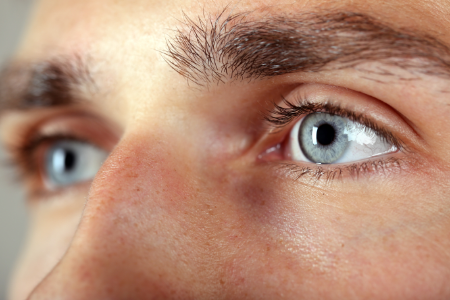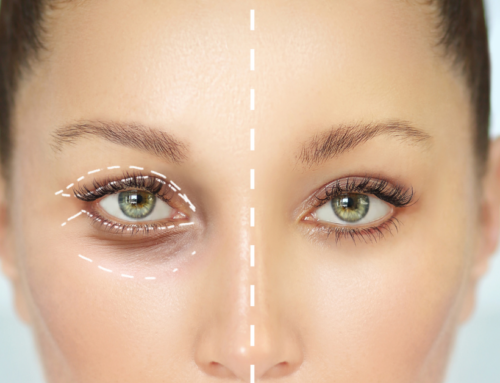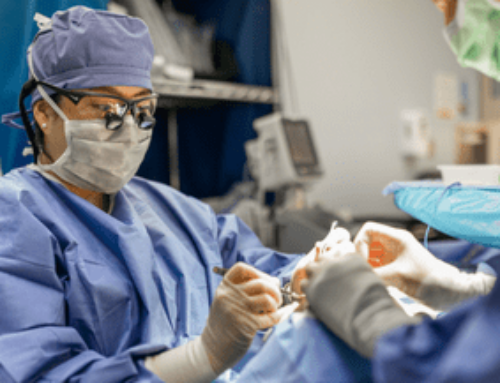- What does blepharoplasty mean?
- Why would I need a blepharoplasty?
- What do I need to do before surgery?
- What happens on the day of surgery?
- What is recovery like after blepharoplasty?
- Are there risks with blepharoplasty?
- Is blepharoplasty covered by insurance?
- How do I know if I am a candidate?
Baggy and saggy eyelids can make you appear older and fatigued. Eyelids that droop can even start impeding your vision as you age. Fortunately, eyelid surgery called blepharoplasty can help in both cases.
This blog will look more closely at blepharoplasty surgery so you can understand when this procedure is indicated.
What Does Blepharoplasty Mean?
Blepharoplasty is a surgery performed to remove heavy, sagging skin and bulging fat that can make you look older and more tired than you actually are. Aesthetic benefits of this procedure can take years off the appearance of the eyes.
Blepharoplasty can be done to rejuvenate the upper eyelids, the lower eyelids, or both. It can be planned in conjunction with other surgeries such as a brow lift or ptosis repair, or with cosmetic procedures such as Botox, dermal fillers, or Laser Treatments to help you look younger, less stressed, and more rested.
Why Would I Need A Blepharoplasty?
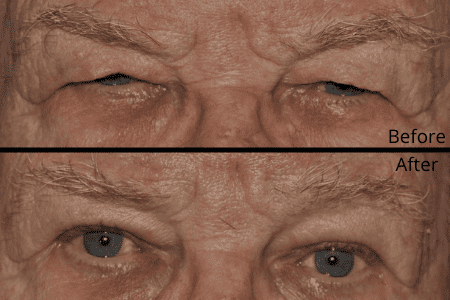
For most people, these changes in the skin and tissues around the eyes is a normal part of aging. As we age, collagen production declines and skin loses elasticity and tissues become thin and loose.
Over time, the constant pull of gravity adds to the weight being pulled down over our eyes. We often inherit aging patterns, particularly the lower eyelid “bags,” but some behaviors such as habitual eye rubbing also exacerbate the laxity and stretching of our lids.
All these factors together can cause the fat to bulge and skin to sag and droop around the upper and lower eyelids. The upper eyelid skin can even sit on or fold over the eyelashes and get in the way of seeing clearly. When these changes happen, you have the option of selecting eyelid surgery to restore the look, feel, and function of your eyes.
What Do I Need to Do Before Surgery?
Blepharoplasty is a surgical procedure, so many of the same steps you would take for any surgery are recommended. For example, you’ll need to ensure you are in good health, meet your surgeon for a consultation prior to surgery, and prepare for your recovery and aftercare.
At your consultation, your surgeon will conduct a thorough examination around your eyes, including checking your vision, eye pressure and tear production. Your exam findings and surgical options will be discussed with you. Make sure to bring your complete and updated list of medications, vitamins and supplements. You will be advised to avoid certain ones before surgery to decrease the risk of excessive bleeding. Depending on your health and type of anesthesia you will be getting, you may need a medical clearance from your primary care physician or cardiologist in order to proceed with surgery and to stop certain medications. Smoking should be avoided before and after surgery in order to optimize your healing, and to minimize scarring and inflammation.
At home, you should have a few things ready to help aid your recovery, such as:
- Artificial tears or lubricating eye drops, to help moisturize your eyes
- Gauze pads, clean towels and washcloths
- Ice cubes, ice packs or other cold packs like bags of frozen vegetables (we recommend making several packs of frozen peas in sandwich bags)
- Over-the-counter oral pain relievers (ie. acetaminophen) (do NOT use aspirin or NSAIDS such as Advil, Aleve, Motrin or Naproxen, due to an increased risk of bleeding)
- Over-the-counter oral allergy/anti-histamine (diphenydramine) medications for itching
- Over-the-counter oral arnica supplements to help with bruising (ask your surgeon about this optional supplement)
Lastly, plan ahead for meals, transportation and time off of work or activities, especially if you live alone or think you may need assistance during your recovery. The day before surgery, make sure you know which of your medications you should or should not take before surgery, and if you need to fast on the day of surgery. Double check your surgery time and check in with your ride to the surgery center. Also don’t forget to get a good night’s rest.
What Happens on the Day of Surgery?
Eyelid surgery is an outpatient, same-day procedure. A bilateral upper lid blepharoplasty typically takes approximately 30 minutes, but expect to be at the surgery center for 1 to 2 hours.
When you arrive at the surgery center, you will check in at the front desk and then be brought back to be prepped for surgery. Your medical and surgical history, medications and allergies will all be reviewed. Your surgeon will confirm the surgery that is planned for you and mark your eyelids. Your nurse will confirm your first follow-up appointment and review post-operative instructions. If you are scheduled for IV anesthesia, you will have an IV line placed and meet your anesthesia provider. If you opt for oral sedation, you will be given it at this time. You will have the opportunity to use the restroom before being escorted to the operating room (OR).
Once in the OR, your nurse will get you positioned properly on the bed, connect your nasal cannula for oxygen and sterilize or “prep” your eyelids and face. Sterile drapes will be placed around you, leaving your eyelids accessible. Your surgeon will measure and mark your eyelids to ensure the correct amount of tissue removal, then inject local anesthesia into the eyelid skin. The local anesthesia may cause a burning sensation, but it won’t last long, and then you shouldn’t feel any pain for the duration of the surgery. If you do feel any pain or discomfort, you may let your surgeon know so that you may receive more anesthesia.
For upper eyelids: After your eyelids are numb, the surgeon will remove the excess skin, and possibly fat. The skin incision is closed with sutures, and antibiotic ointment is placed over them.
For lower eyelids: After numbing, the incision will be made either through the skin under your eyelash line (subciliary) or through the back surface of your eyelid (transconjunctival). The fat pockets will be accessed and opened and fat will either be removed or repositioned. The lower lids will also be tightened laterally to help prevent the lower lids pulling downward (eyelid retraction) which can be an unwanted consequence after lower eyelid surgery. You will have stitches on the sides of the lids, and antibiotic ointment placed over them. You may also have steri strips and pressure pads placed over the area to help with the swelling.
After your surgery is complete, you will be taken to the recovery area and given cold compresses to apply to your lids as well as drinks and snacks. Your nurse will again review the post-operative instructions and your first follow-up appointment details prior to discharge.
Your vision may be blurred from the ointment and swelling. On this first day, make sure to rest and ice the area as much as you can, keeping your head elevated.
What Is Recovery Like After Blepharoplasty?
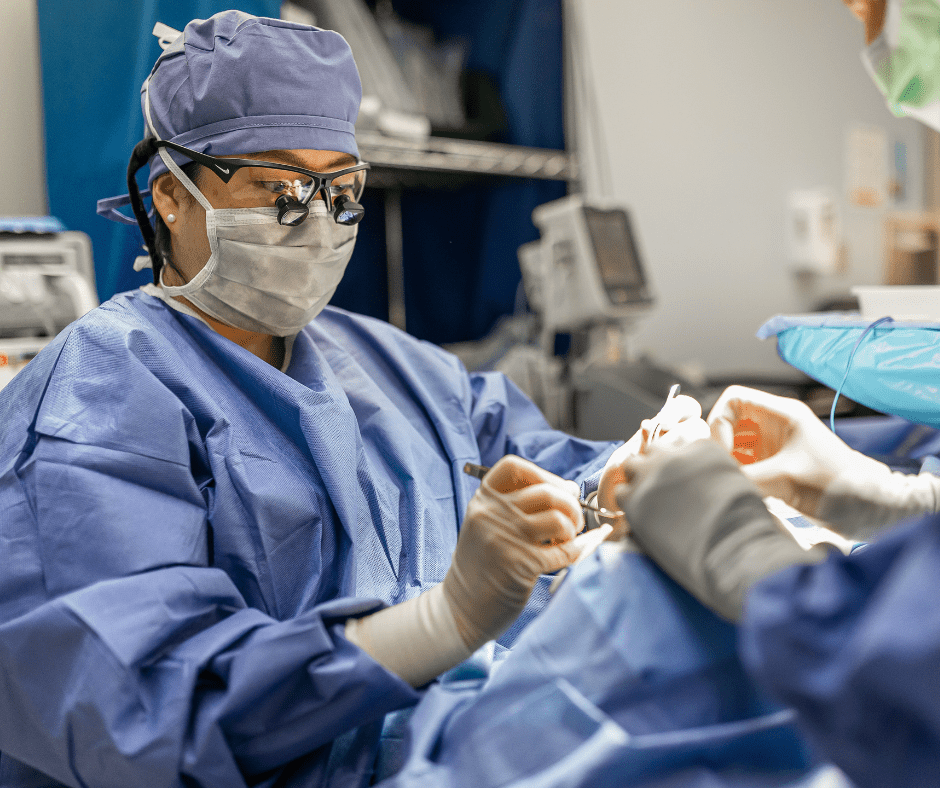
It is important to plan sufficient recovery time from your work and activities. While eyelid surgery is often a quick outpatient procedure, it is still a surgery and taking the proper precautions to heal should be taken seriously. This will be discussed at your consultation. During your recovery period, you will be checked by the oculoplastics team to ensure that you are healing well.
Most of the healing occurs within 1 to 2 weeks. Resting with your head elevated, icing the area and avoiding sun exposure on your face will be critical during this time. Bruising and swelling after surgery are expected and develop immediately after the procedure but vary widely in severity per person. They can take a couple weeks to a few months to resolve. Scarring can be expected any time skin and tissue are cut, although this is typically mild and hidden on the eyelids. If you have stitches in your eyelids, they will be removed approximately one week after surgery.
You will also need to limit your activities for 2 to 4 weeks depending on how you are healing. Strenuous, dirty or sweaty activities should be avoided. This includes but is not limited to lifting, pickleball, golf, jogging/running, swimming, yard work, and sex. You should avoid smoking, which inhibits healing and worsens the risk of scarring. Also, contact lenses and eye makeup should be avoided for approximately one month after surgery. If you have questions regarding specific activities, ask your surgeon at the time of consultation.
Are There Risks With Blepharoplasty?
While blepharoplasties are common and performed on an outpatient basis, as with all surgeries, there are potential risks involved. Complications from eyelid surgery are quite rare, but risks can include:
- Significant bleeding
- Pain
- Infection
- Wound dehiscence
- Irritated and dry eyes
- Over or under-correction
- Problems closing your eyes
- Significant scarring
- Discoloration of the skin
- Long-term blurred vision, double vision or vision loss
- Injury to the eyes or muscles around the eyes
- Reactions to anesthesia
- The need for additional surgery
At the time of your consultation, risks of surgery and precautions during recovery will be reviewed. You can mitigate the risks listed above by choosing an experienced eyelid surgeon with a highly professional clinical team, disclosing your complete medical and surgical history, and by diligently following post-operative instructions.
Is Blepharoplasty Covered By Insurance?
In some cases when the upper eyelid skin is impeding your peripheral vision to a certain degree, upper blepharoplasty may be covered by your medical insurance as a functional (medically necessary) procedure. In addition to a thorough eyelid consultation, photo documentation of your eyelids and a formal peripheral vision exam, called a visual field test, may be necessary to qualify for functional surgery.
Lower eyelid blepharoplasty is considered cosmetic, and is not covered by insurance.
How Do I Know If I Am a Candidate?
If you are in good health and looking to refresh the appearance of your eyes, you may be a candidate for blepharoplasty. Schedule a consultation with the Oculoplastics team at Ocala Eye to see if eyelid surgery is right for you.

